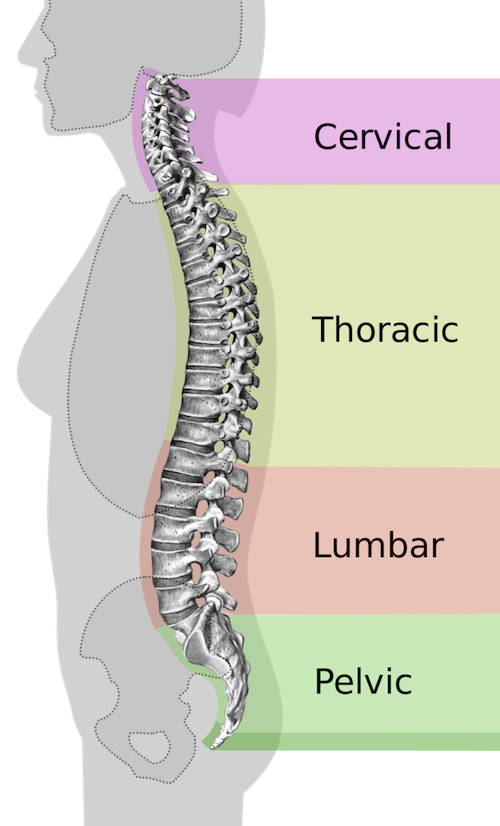Neck Pain Treatment
Neck pain is one of the most common complaints for people of all ages. Whether your neck pain is caused by a bad night of sleep or something more serious, keeping reading to learn more about your pain (and what to do about it).
What is neck pain?
Neck pain sends approximately 15% of men and 25% of women to their physician for treatment at some point in their lifetime. Neck pain is more common in women, but people of all genders and ages experience some form of neck pain during their life.
While neck pain is common, the way people experience it isn’t. Your neck pain may occur with any or all of the following symptoms:
- Sharp, burning, dull, or radiating pain
- Reduced range of motion in the neck
- Headaches
- Shoulder pain
- Upper extremity pain, weakness, or sensory changes
- Coordination and balance difficulty
Neck pain anatomy
The physiological function and anatomy of the neck is the key in evaluating a person with neck pain.
The cervical spine has many important functions, which includes providing support and mobility to the head and neck as well as protecting the spinal cord emerging from the brain. The cervical spine provides generous amounts of movement of the head. It is considered the most flexible portion of the spine. Because the cervical spine is the most flexible portion of the spinal cord, it is also the most vulnerable to injury.
Structurally, the cervical spine is composed of seven small vertebrae, as well as muscles, ligaments, joints, and nerves. Separating each individual vertebrae are discs that cushion the space and minimize impact on the cervical spinal.
The atlas and axis are the top two cervical vertebrae and are responsible for the majority of your head’s rotational movement. These vertebrae form joints as they support the head and connect to the spine. They are also involved in coordination and balance for the rest of the body.
Additionally, there are ligaments that provide strength and mobility to the cervical spine as well as many muscles that are responsible for movement. Spinal nerves attach to the cervical spinal cord and exit the spine to innervate the skin, muscles, and surrounding structures of the neck and upper extremities.
Although the cervical spine is just a small portion of the whole spinal column, the complexity of this section and the variety of structures are the reason neck pain is so common.

The incidence and cost of neck pain
A report by the American Academy of Orthopedic Surgeons found that people in the U.S. are experiencing musculoskeletal pain (including neck pain) in record numbers. Nearly 50% of the U.S. suffers from some form of musculoskeletal pain.
The high cost of neck pain is not lost on David Pisetsky, MD, USBJI president, and professor of medicine and immunology at Duke University Medical School, who noted that:
“The number of visits to physicians for these disorders, the cost of treating them, and the indirect costs associated with pain and loss of mobility, are proportionately much higher than the resources currently being allocated to combat these conditions and injuries.”
Stuart L. Weinstein, MD, co-chair of the report’s Steering Committee and a professor of orthopaedics and rehabilitation at the University of Iowa Hospitals and Clinics agreed. He highlighted the importance of more research:
“As a nation, we need to establish greater funding for musculoskeletal research, improve our understanding and strategies for prevention and treatment of these injuries and conditions, and ensure that more adults and children receive appropriate treatment sooner, and on an ongoing basis, to ensure quality of life and productivity.”
What causes neck pain?
There are many causes of neck pain, both acute and chronic. If your pain suddenly occurs and lasts less than three months it is considered acute. Acute neck pain is commonly caused by facet syndrome, acute muscle strain, or a traumatic injury like whiplash.
If your pain persists more than three months, it is termed chronic neck pain. This pain can be from multiple sources, but most often occurs from facet joint irritation, discs, ligaments, and muscular sources.
These causes of neck pain are as varied as the people who experience it. Let’s look at each cause in more detail.
Muscle strain and misuse
Overuse of the muscles and falling asleep in awkward positions for extended periods of time often produces muscle strains. The neck muscles located in the back of the neck become tense. When the neck muscles are continuously or frequently strained, a chronic pain syndrome can develop.
Muscles and ligaments in the neck may also become strained and irritated during strenuous lifting and excessive use. This can cause local nerve irritation. Myofascial (muscle-related) and ligament injury accounts for the majority of neck pain cases.
Disc disease
This is one of the most common causes of neck pain and one of the most common reasons for surgery. Disc disease may be acute, resulting from trauma, or more commonly, chronic degeneration.
Degenerative disc disease is a process that occurs from the thinning and dehydration of the discs over time. The intervertebral discs between the vertebrae are designed to be soft and provide support. Over time or with trauma, the discs can collapse backwards through ligaments and cause irritation to adjacent nerves or even spinal cord compression.
Degenerative disc changes also occur as a person ages. Discs can decay or herniate, producing local nerve root irritation or compression of the spinal cord.
Nerve compression or injury
The first through the third cervical nerves that exit from your cervical vertebrae provide sensory information to your head and face.
When these nerves become compressed or inflamed, they can cause pain and other sensory deficits in specific regions of the head and face. When the greater and lesser occipital nerves are involved, this can cause significant radiating pain to the face and head.
Other nerves located lower in the cervical spine combine to form a large plexus of nerves that provides motor and sensory support to the upper extremities. In addition to neck pain, injury to these nerves can cause weakness, pain, loss of feeling, or other symptoms in the arms.

Whiplash
Whiplash is a well-known cause of neck pain. It often occurs after motor vehicle accidents, especially in rear-end collisions.
This hyperextension of the neck can result in:
- Stretching of the soft tissues of the neck
- Local inflammation
- Muscle tension
- Ligament strain
When ligaments and tendons become inflamed or damaged, they can cause persistent pain that intensifies with particular movements.
Cervical spondylosis (neck arthritis)
In addition to neck muscle strains and nerve compression, the neck facet joints are also commonly involved in painful neck conditions. Cervical spondylosis is caused by degenerative changes of the cervical vertebrae and adjacent facet joints.
The symptoms typically begin around the age of 40, but can occur earlier with trauma. As arthritis progresses, pain typically worsens, especially when extending the head backwards.
Osteoporosis in the cervical spine
Osteoporosis is a thinning of bones that is common in women as they enter menopause.
This thinning can cause neck pain due to fracture, or it may lead to disc herniation or nerve compression.
Spinal stenosis
Another frequent cause of neck pain is spinal stenosis, the narrowing of the central spinal canal. This narrowing can compress the spinal cord and surrounding nerves roots. It can cause:
- Cramping pain
- Shooting pain
- Numbness in the legs, back, neck, shoulders, or arms
The symptoms of spinal stenosis typically depend on the area of the spine that is affected. In cervical spinal stenosis, the upper extremities and shoulders are most commonly affected.
Oropharyngeal cancers and other causes
In rare cases, cancer of the oral cavity and neck may also lead to neck pain.
Metastatic tumors (cancer spread from another organ system) are the most common type of malignant lesions of the spine. An estimated 5-10% of patients with a primary cancer suffer spinal metastases. Breast, lung, prostate, and renal cell carcinomas are the most common tumors that metastasize to the spine. Myeloma, lymphoma, and gastrointestinal carcinoma can also invade the vertebral column, causing pain in the neck.
Less common causes of neck pain include vertebral compression fractures, spinal cord disorders, tumors, and infection.
When is neck pain a medical emergency?
For all causes of neck pain, symptoms that indicate a possible emergency situation include:
- Neck pain with altered level of consciousness
- Sudden blindness
- Paralysis
- Weakness
- Bowel/bladder changes
- Vision/hearing/taste change
- Severe vomiting
- Recent weight changes
- Fever
All of these symptoms require immediate medical attention.
Getting a neck pain diagnosis
It’s important to get a proper diagnosis of the underlying cause of your neck pain so you can get appropriate treatments. Your doctor will start your diagnosis with a complete physical exam to look for tenderness over certain areas of the spine. This exam also assesses your current range of motion (and where it might be limited).
Based on your medical history, exam, and risk factors, your doctor may also order radiological imaging such as an X-ray, CT scan, MRI, or bone scan.
What neck pain treatments could help me?
Management of neck pain depends on the cause of your pain. Minimally-invasive procedures are numerous and can be the most helpful to control pain and improve daily functioning with fewer side effects.
In the past few years there has been an abundance of research surrounding non-surgical procedures and their effectiveness in treating neck pain. Most patients have the best results using a combination of treatment approaches.
Here are 20 of the best treatments for neck pain.

1. Get a better pillow
If your neck pain is directly related to poor sleep, the best thing to do is to take the time to find a better pillow for neck pain.
If you are not sure which one might work best for you, ask your doctor for recommendations.
2. Nutrition and exercise
Exercise can improve neck pain by increasing flexibility and range of motion. Another benefit is the release of hormones called endorphins that are your body’s natural pain relievers.
Nutrition and healthy eating may be one of the powerful treatments to combat nutritional deficits that contribute to pain.
3. Physical therapy
Physical therapy can be an effective treatment to help you move through your daily life without functional limitations.
For neck pain, physical therapy aims to increase range of motion and muscular strength.
4. Biofeedback
Biofeedback develops a person’s awareness of their response to pain to help them effectively manage it. This method enables you to gain some conscious control of involuntary responses such as:
- Blood pressure
- Temperature
- Heart rate
All of these can influence your level of pain. A better awareness of your body can teach you to relax, and this can help to relieve pain.
5. Acupuncture
In this procedure, hair-thin needles are inserted into specific points on the body. These needles may cause your body to release hormones called endorphins that are your body’s natural pain relievers.
Acupuncture can also help you relax, decreasing stress, tension, and muscular spasm. Acupuncture has been shown to be helpful in those with chronic pain.
6. Massage
Gentle focal rubbing of tender areas may help relieve muscle spasms or contractions and improve the discomfort associated with it.
Massage can also help you relax, decreasing stress and tension.
7. Chiropractic manipulations
Targeted chiropractic adjustments, especially combined with other treatments like biofeedback and massage, may significantly reduce neck pain.
Manipulations can help align the spine to allow correct nerve transmission.
8. Transcutaneous electrical nerve stimulation (TENS)
TENS is a technique that relieves pain by delivering a mild electric current to the skin at the site of the pain.
The electric impulses block pain transmission to the brain. Some patients experience a buzzing sensation on the skin, however this is less unpleasant than the original pain condition.
9. Neck pain medications
Non-steroidal anti-inflammatory drugs (NSAIDs), acetaminophen, muscle relaxants, and membrane-stabilizing medications can all help with neck pain.
Note that it has been well-established that opioids are not effective at treating chronic pain of any kind (including neck pain), and the risk of addiction and side effects is substantial.
10. Cervical epidural steroid injections
Cervical epidural steroid injections are frequently used for neck pain caused by degenerative disc disease.
This procedure involves injecting a steroid into the epidural space of the spinal cord near the irritated nerve roots. The medicine then spreads to other levels and portions of the spine, reducing inflammation and irritation.
Some patients find the best results with a series of three injections, but this treatment may not provide relief for all patients with neck pain.
11. Occipital nerve blocks
This method involves an injection of local anesthetic and corticosteroid over the occipital nerves (back of head).
The blocks can dramatically improve pain and increase the quality of your life. It’s also useful as a diagnostic tool to locate the nerves with damage.
12. Occipital nerve stimulation
If an occipital nerve block dulls the pain with medication, occipital nerve stimulation interrupts it with an electrical signal.
Electrodes release a small electrical current that inhibits pain transmission and causes pain relief.
13. Trigger point injections
These injections can be an effective treatment for muscle spasms.
The procedure involves injecting a local anesthetic and steroid into a trigger point, or area where the spasm seems to have originated. This can calm the muscles and decrease pain.
14. Cervical medial branch blocks/denervation
This is a widely-used treatment for neck pain by pain specialists. A specific nerve, the medial branch, innervates the facet joints and can be blocked with the injection of medication into a specific area of the body with a nerve-numbing substance or anesthetic.
Medial branch blocks (MBBs) are a minimally-invasive non-surgical treatment that is used for arthritis-related neck and back pain. The injections work by reducing inflammation and irritation in the facet joints of the spine that is causing your pain.
Medial branch blocks can also accurately identify the cause of neck pain.
15. Radiofrequency ablation
In addition to blocking the medial branch nerves, the same nerves can also be destroyed for longer durations.
Radiofrequency ablation delivers heat to the pain-causing nerve. This heat temporarily disables (or destroys) the nerve, which stops pain signaling. You may need to repeat this procedure, as nerves can regenerate, but it can lead to pain relief without surgery.
16. Cervical lysis of adhesions
Also known as the Racz procedure after the doctor who pioneered it, this procedure has been proven effective in removing excessive scar tissue in the epidural space when conservative neck pain treatment has failed.
This procedure is used in compression fractures, post-laminectomy syndrome, radiculopathy, and degenerative disc disease.
17. Infusion techniques
This procedure involves inserting a small catheter through a needle into the epidural space or directly next to affected nerves. Local anesthetic and other medicines are often given through the catheter for extended time periods.
When the nerves are blocked continuously with an infusion, pain relief can be dramatic and long-lasting.
18. Cervical spinal cord stimulation (SCS)
In this procedure, tiny electrodes are placed within the epidural space close to the spinal cord. The electrodes release a small electrical current to the spinal cord that inhibits pain transmission. This inhibition of pain signals allows for pain relief.
Cervical SCS is currently used for treating many different chronic pain conditions, including chronic neck pain. Early studies of this procedure also found that it dramatically improved intractable migraine pain.
19. Neck surgery
In rare cases, some patients may need surgery to resolve the underlying cause of their neck pain. Surgery is an option best undertaken after other, more conservative options have failed.
Get help with your neck pain
It is extremely important to not only treat the physical symptoms of your neck pain, but also the emotional stressors as well. Depression, anxiety, and stress tend to exacerbate chronic pain syndromes. Worsening neck pain is a common manifestation of these emotional stressors.
Some of these non-invasive neck treatments, such as massage, acupuncture, biofeedback, and behavioral therapy can all be extremely beneficial for patients suffering from chronic pain. When done in combination with other minimally-invasive treatments, it can help you get back to a life with less pain.
References
- Cervical interlaminar epidural steroid injection for neck pain and cervical radiculopathy: effect and prognostic factors. Skeletal Radiol. 2007 May;36(5):431-6. Epub 2007 Mar 6 Kwon JW, Lee JW, Kim SH, Choi JY, Yeom JS, Kim HJ, Kwack KS, Moon SG, Jun WS, Kang HS. PMID: 17340166
- Epidemiology and risk factors for spine pain Neurol Clin. 2007 May;25(2):353-71 Rubin DI. PMID: 17445733
- Botulinum toxin type A therapy for cervical dystonia Cochrane Database Syst Rev. 2005 Jan 25;(1):CD003633. Costa J, Espírito-Santo C, Borges A, Ferreira JJ, Coelho M, Moore P, Sampaio C. PMID: 15674910
- Use of botulinum toxin-A for musculoskeletal pain in patients with whiplash associated disorders BMC Musculoskelet Disord. 2004 Feb 13;5:5. Juan FJ PMID: 15018625
- Therapeutic cervical medial branch blocks in managing chronic neck pain: a preliminary report of a randomized, double-blind, controlled trial: clinical trial NCT0033272. Pain Physician. 2006 Oct;9(4):333-46 Manchikanti L, Damron K, Cash K, Manchukonda R, Pampati V. PMID: 17066118
- Neuromodulation of the cervical spinal cord in the treatment of chronic intractable neck and upper extremity pain: a case series and review of the literature.Pain Physician. 2007 Mar;10(2):305-11 Vallejo R, Kramer J, Benyamin R. PMID: 17387353
- Acupuncture for neck disorders. Spine. 2007 Jan 15;32(2):236-43. Trinh K, Graham N, Gross A, Goldsmith C, Wang E, Cameron I, Kay T. PMID: 17224820
- Cervical Spinal Metastasis: Anterior Reconstruction and Stabilization Techniques After Tumor Resection James K. Liu, M.D.; Ronald I. Apfelbaum, M.D.; Bennie W. Chiles Iii, M.D.; Meic H. Schmidt, M.D. Neurosurg Focus 15(5), 2003. © 2003 American Association of Neurological Surgeons Posted 12/17/2003